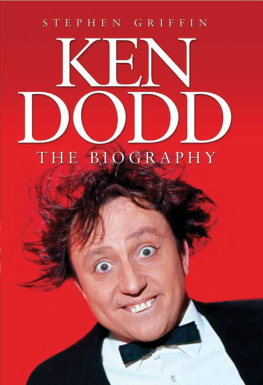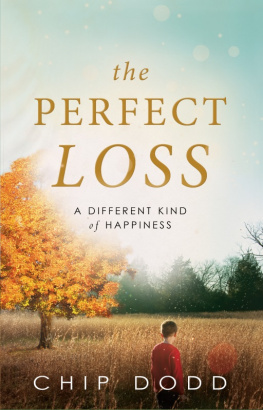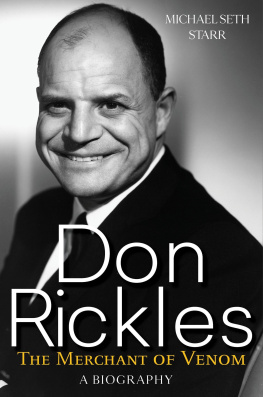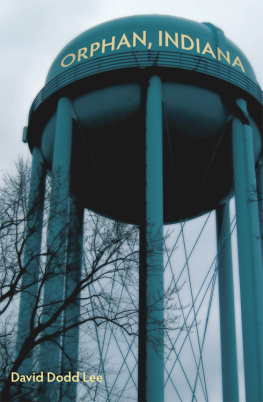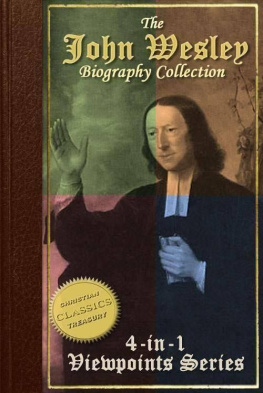
First published in Great Britain in 2005 by
Michael OMara Books Limited
9 Lion Yard
Tremadoc Road
London SW4 7NQ
This electronic edition published in 2011
ISBN: 978-1-84317-731-9 in EPub format
ISBN: 978-1-84317-732-6 in Mobipocket format
ISBN: 978-1-84317-123-2 in hardback print format
ISBN: 978-1-84317-281-9 in paperback print format
Copyright Stephen Griffin 2005
The right of Stephen Griffin to be identified as the author of this work has been asserted by him in accordance with the Copyright, Designs and Patents Act 1988.
All rights reserved. You may not copy, store, distribute, transmit, reproduce or otherwise make available this publication (or any part of it) in any form, or by any means (electronic, digital, optical, mechanical, photocopying, recording or otherwise), without the prior written permission of the publisher. Any person who does any unauthorized act in relation to this publication may be liable to criminal prosecution and civil claims for damages.
A CIP catalogue record for this book is available from the British Library.
Designed and typeset by Martin Bristow
www.mombooks.com
Cover design: www.envydesign.co.uk
Front cover photograph www.popperfoto.com
Contents
For Kate. And Sheila.
Acknowledgements
I T HAS BEEN A LONG , hard slog from the broken-biscuit repair works of Knotty Ash to the finished volume youre excitedly clutching in your eager hands. There were times that I thought this book would never see the light of day, but that it has is due in part to the following individuals, who were so generous with their time: Ken Campbell, Ian Clayton, Sir Bill Cotton, Mike Craig, Michael Grade, Peter Hepple, Roy Hudd, George Melly, David Nobbs, Denis Norden, Steve Punt, Joe Riley, Arthur Smith, Alison Steadman, Professor Richard Wiseman and Victoria Wood. Special thanks also go to Jimmy Perry for contributing a perfectly splendid foreword.
I would also like to thank Clare Brotherwood, Sue Norris, Charlotte Stock, my agent Guy Rose, Alexandra Connor, and, at Michael OMara Books, Lindsay Davies, Helen Cumberbatch and Diana Briscoe.
In attempting to learn whos the Doddy, Ive been left with many cherishable memories: such as Michael Grade, with omnipresent cigar, sitting behind a desk the size of a playing field at Pinewood Studios, telling me that he could only spare me half an hour of his time an hour later he was performing Frank Randles act for me; there was the early morning whisky shared with George Melly (now sadly deceased since this book was first published in 2005); the on-off flirtation with Ann Widdecombe MP over possible interview dates (which eventually came to nothing); and the hour it took to get a word in while Mike Craig was telling me how long Dodd goes on! Oh, and then there was the morning a succession of friends phoned to let me know that Dodd was appearing on My Favourite Hymns (so Jerry, thats what you young bucks do on a Sunday morning!). It is my hope that the resulting book goes some way to providing an answer to the question: what makes Ken Dodd tick?
Little is to be learned from merely listing his CV, however; it is far more interesting to examine the facts of his life while analysing his methods and motivations, particularly when one considers that analysis both of his own work and of the mechanics of comedy have been the cornerstone of Dodds career.
It is a great pity that Dodd has never got round to removing the dust cover from his ancient Amstrad word processor and writing his own life story himself so far, his literary output has been confined to a handful of Diddymen annuals and a book about butties. I, for one, would have been delighted to learn more about the comedy theories that he has hinted at over the years for example, what exactly are the jokecreation formulas that he mentioned at his tax trial?
It is also a shame that Dodd steadfastly ignored my numerous requests for an interview, though I derive some crumb of comfort from the fact that it was nothing personal, as he is still very much a private man these days, and only prepared to talk to a select few. Nonetheless, walking a tightrope between objectivity and admiration, I have done my best to present a fair and balanced account of one of the most unique talents this country has ever produced.
S TEPHEN G RIFFIN , 2005
Foreword
I N M ARCH 2004, I went to see Ken Dodd at the De Montfort Hall in Leicester. This involved a long car journey in dreadful weather, but that night is something I shall always remember as perhaps one of the few great performances of a stand-up comedian that I have ever seen.
The hall, which held over 2,000 people, was packed. Promptly on time, the lights went down and the band played Love Is Like A Violin. On came Doddy, dressed in all his props and waving his tickling stick. There was a huge roar of affection from the audience and then Kenny took control.
Later I looked round. Most of the audience were in their sixties or seventies, and it was now past one oclock in the morning. But no one had left. How they all got home, Ill never know. During those five hours, Ken Dodd had cast a magic spell over us and we didnt care about anything.
Just before the war I remember seeing the great Max Miller at the Chiswick Empire. Max was at the height of his fame. He said to the audience, Therell be no one to take my place after Ive gone, lady.
Therell be no one to take Ken Dodds place after hes gone. But dont worry, Doddy were all coming with you!
J IMMY P ERRY , OBE
Introduction
Its fifteen years since I went out of my mind Id never go back.
I TS 1980-SOMETHING on a cold, grey evening inside the now-defunct, authority-run Venue theatre in Borehamwood, where a cold, grey audience fidget uneasily on their cold, grey stack chairs. The breeze-block walls leach the place of any atmosphere its about as far from the lush, plush, crimson velour womb of Aunties The Good Old Days as its possible to get.
Then, from the wings explodes a vision in full-length, pillar-box-red fun fur, banging the largest drum this side of Knotty Ash. The beating is relentless. Do you give in? threatens the only man in the world who can eat a tomato through a tennis racket.
Were off!
Comedian, singer and all-round entertainer, Ken Dodd has set the tone for the evening (and possibly early morning) to come. For relentless is the only word to describe his act: less of a comedy set, it is more an assault on the senses, or as he puts it, a feast of fun and a challenge to the kidneys. Actor Roy Barraclough has correctly observed that Dodds is the only show during which the audience can get deep-vein thrombosis.
This is like antibiotics, Dodd warns the faithful a sea of loose dentures and drying plastic pixie hoods you have to finish the course! And hes right. Once he starts hes unstoppable like a runaway train. This isnt television, Missus, he taunts, impishly fixing a gimlet eye on a suitable matron, you cant switch me off!
Not even the failure of the National Grid fazes Dodd. In February 2004, when a power cut plunged the Stockport Plaza into darkness and silenced the microphones, the old trooper simply grabbed a torch, executed an impromptu tap-dance and carried on regardless. As his publicist Robert Holmes pointed out after the performance, The show and the audience are the most important things to Ken. The lights went out, but that doesnt stop Ken; nothing stops Ken.
It seems churlish to complain, but this relentlessness on Dodds part can be almost wearingly funny: the paroxysms he has been known to induce can tax his acolytes more than the Inland Revenue taxed their hero. Subjected to an average of twelve jokes a minute during a four- or five-hour gagfest, very soon members of his audience neither know what joke they are laughing at, nor do they care.
Next page
